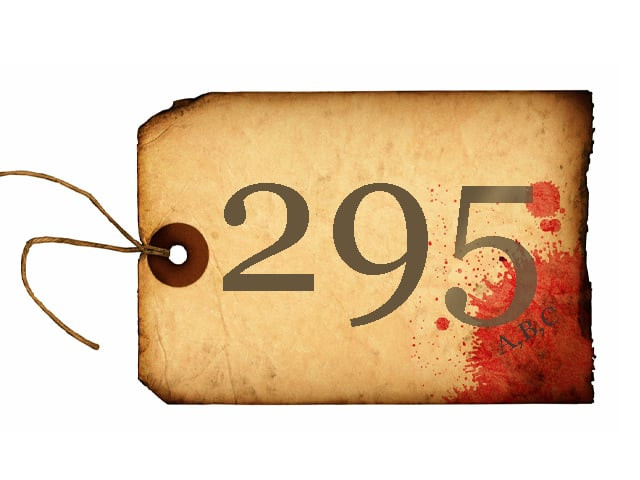Quivering shapes help documentary explore fixed ideas of Pakistan's blasphemy law
Early screening probes colonial roots and contested scholarship of law

When confronted in 2013, the man who claimed scholars agreed on the death penalty for blasphemy told his interrogators that he could not actually read Arabic.
This man, Advocate Ismail Qureshi, is at the centre of a new documentary by the Alliance Against Blasphemy Politics Pakistan (AABP). It hosted an early screening of The Inevitable Misuse of Blasphemy Politics (2024) and a new episode titled Blasphemy as Biddat: Intra-Muslim Difference in the Age of Empires on Sunday, August 17, at Kitab Ghar. A small group of students, teachers and journalists gathered to watch the documentaries and have a Q&A with the team at the modest public library in Karachi.
Read: Minister highlights response to misuse of blasphemy laws
The documentaries are on Section 295-C of the Pakistan Penal Code or the country's blasphemy law which came about in 1986 and were reinforced by the Federal Shariat Court in 1991. Section 295-C says death is the sole punishment for blasphemy against the Holy Prophet Muhammad (Peace Be Upon Him) and the law makes questioning its authority an act of blasphemy itself. What the authorities describe as the "misuse" of the law is, in fact, its only possible correct application. The legislation's limitless definitions transform any action into potential blasphemy.
An estimated 767 people are currently in custody on blasphemy charges (as of mid-2024), according to the National Commission for Human Rights.
People accused of blasphemy are at extremely high risk of extrajudicial violence. The Centre for Social Justice recorded that at least 104 people were killed by mobs and in custody between 1994 and 2024. Rights groups say these numbers reflect not just legal enforcement but a broader climate in which accusations are made to settle personal scores, seize property or provoke mob action.
On April 13, 2017, Mashal Khan, a 23-year-old student at Abdul Wali Khan University, was attacked and killed by a mob following online allegations of blasphemy. An investigation team concluded that the allegations were fabricated. An anti-terrorism court tried 57 suspects in the lynching: one was sentenced to death, five to life imprisonment, 25 received shorter prison terms and 26 were acquitted, with further convictions issued afterwards.
The law claims legitimacy through centuries-old Islamic tradition and scholarly consensus (ijma). Yet, this supposed continuity of divine command has produced a striking statistical anomaly: whilst blasphemy accusations have risen 20,000% since 1986, not a single conviction has been upheld by the Supreme Court. Perhaps the most well known case is that of Asia Noreen, a Christian farm worker, who was convicted in 2010 and sentenced to death. After eight years in custody, she was acquitted by the Supreme Court on October 31, 2018, and left Pakistan for Canada.
The 13-minute animated Blasphemy as Biddat challenges the idea that these laws are rooted in timeless Islamic tradition. The films’ thesis is that Pakistan's most-defended piece of legislation is actually erected on colonial legal foundations and fabricated Islamic scholarship. Its “sacred” language was copy-pasted from old British legal documents, Australian defamation cases, and American lawsuits.
One of the most startling revelations was the law's linguistic origins. Through meticulous textual analysis, the team traced terms such as "innuendo," "insinuation," and "imputation" not to Islamic jurisprudence, but to Australian defamation law, American libel legislation, and Indian hate speech statutes.
And the man who claimed religious authority over these penalties has admitted he couldn’t even read Arabic and did not understand the texts he claimed to cite. “When we began reading the books of Islamist legal activists from the 1980s–90s, including Ismail Qureshi’s, it was glaringly obvious that they were misquoting these sources,” said a member of the AABP Team while speaking to The Express Tribune at the screening. “We met Qureshi almost a decade ago and that is where he acknowledged his lack of training to us.”
Ismail Qureshi’s fabricated scholarship had transformed Abu Hanifa's eighth-century position — that a non-Muslim blasphemer is not punishable by death — into its complete opposite, forming the foundation for Pakistan's 1991 Federal Shariat Court ruling. Qureshi wasn't just any author, as the team reveals “He drafted the 295-C bill and successfully petitioned to make it a hadd (fixed) punishment, without understanding the sources he cited.”
Jurists, Islamic law scholars, historians, and legal experts argue that Pakistan’s blasphemy laws diverge from the “fiqhi” lineage of Islamic jurisprudence and are innovations (biddat) born of colonial and post-colonial statecraft. This shift was not organic, but shaped by colonial interventions aimed at controlling the “passions” of subject populations.
Classical Islamic jurisprudence, on the other hand, required strict categorisation of crimes, attention to intent, and context. This framework allowed more flexibility than today’s rigid interpretations, which impose harsh punishments without regard to intent or circumstance. These laws thus come in conflict with foundational Islamic legal principles of evidence, intent, and proportionality.
Read more: IHC orders probe into online blasphemy spike
Given the fraught nature of the subject, the AABP decided to use 2D flat symbolic animation rather than conventional documentary footage. This aesthetic choice created intellectual distance from what is extremely emotionally charged material, which makes space for rational analysis rather than just reactions. “Animation offers abstraction and safety,” explained a member of the team. “It lets us sidestep familiar tropes and charged imagery that often provoke defensiveness around blasphemy politics.”
So, instead of real faces or locations, animation of quivering shapes and merging boxes set to a calm voice over keeps the viewer concentrated on the ideas behind blasphemy politics. “In a context where blasphemy politics thrives on spectacle and naming,” another member added, “animation becomes a powerful medium to recentralise discourse over drama.” Complex legal concepts are broken down with shifting lines, blobs that swell and shrink and shapes that bleed into each other. Using real-life television or amateur social media video would have risked turning the documentary into trauma voyeurism.
Also: Blasphemy probe
The documentaries sift through meticulous scholarship to distinguish authentic tradition from its colonial and contemporary distortions. “The first step is to demystify the law to show that 295-C is not sacred, not divine, and not rooted in Islamic legal consensus,” said the team member. “It is a very modern law based on culture wars in the 80s.”
For this member of the team, making the film deepened his respect for Islamic legal tradition. “I saw how careful, nuanced, and ethically aware classical jurists were, especially in contrast to the hyper-modern, one-size-fits-all laws passed in the name of Islam."



















COMMENTS
Comments are moderated and generally will be posted if they are on-topic and not abusive.
For more information, please see our Comments FAQ